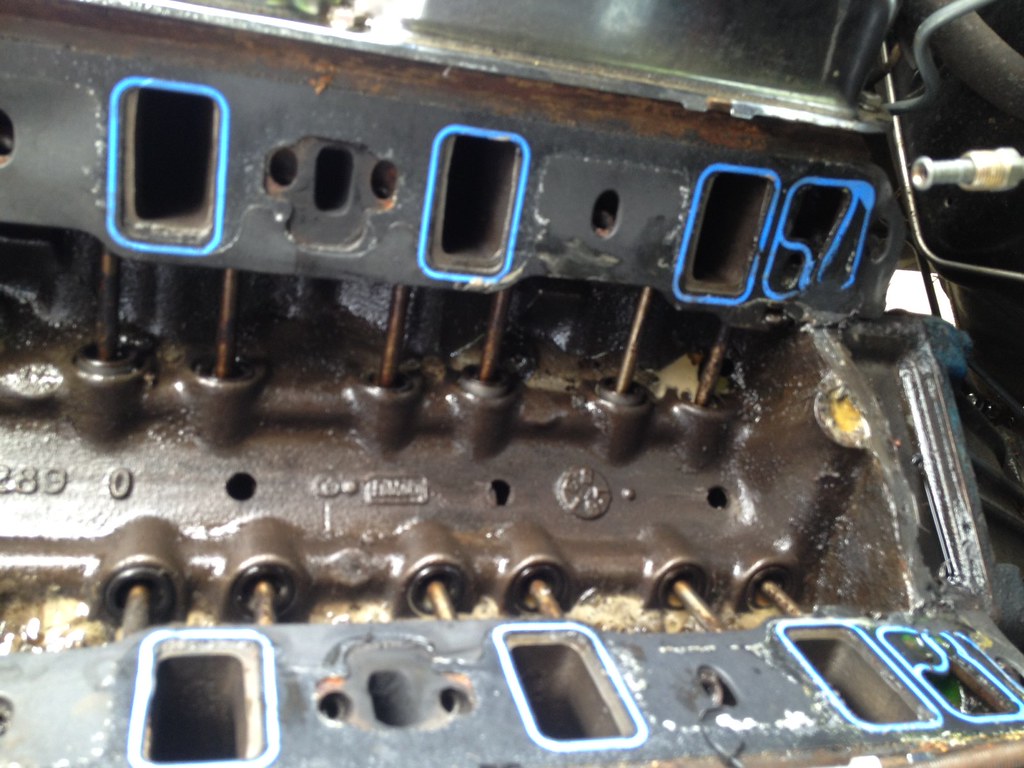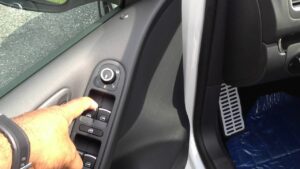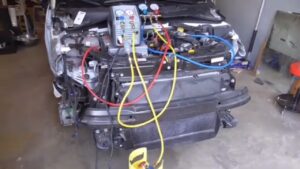When it comes to installing an intake gasket, one common question that often arises is which side of the gasket should be facing up. This important detail can have an impact on the overall performance and functionality of the engine. In this article, we will explore the correct orientation for installing an intake gasket and provide some insights to help you ensure a successful installation.
Understanding Intake Gasket Installation
Before delving into the specific orientation of the intake gasket, it is essential to understand the purpose and function of this crucial component. The intake gasket serves as a barrier between the intake manifold and the engine block, ensuring a proper seal and preventing unwanted leaks.
Intake gaskets are typically made of a durable and heat-resistant material, such as rubber or silicone. They come in various shapes and sizes to fit different engine configurations and are designed to withstand the extreme temperatures and pressures generated within the engine.

Credit: m.youtube.com
Orientation of the Intake Gasket
When installing an intake gasket, the general rule of thumb is to ensure that the raised portion of the gasket is facing up towards the intake manifold. This orientation is crucial to create a tight seal and prevent any air or fluid leaks.
Most intake gaskets will have a clear marking or indication to help you identify the correct side to face up. Often, there will be an “UP” stamp or an arrow indicating the upward orientation. It is essential to follow these markings carefully to ensure the proper installation of the gasket.
However, it is important to note that not all intake gaskets have a clear marking or indication of the correct orientation. In such cases, you can rely on the visual appearance of the gasket to determine the correct side. The side with a smoother texture or a metallic finish is usually meant to face outwards, towards the intake manifold.
Tips for Successful Intake Gasket Installation
Here are some additional tips to keep in mind when installing an intake gasket:
- Clean the surfaces: Before installing the gasket, ensure that the surfaces of both the intake manifold and the engine block are clean and free from any dirt, debris, or old gasket material. Use an appropriate cleaning solution to eliminate any residues.
- Apply sealant: Depending on the specific requirements and recommendations of the gasket manufacturer, you may need to apply a thin layer of sealant to enhance the sealing properties of the gasket. Follow the manufacturer’s instructions carefully to ensure proper application.
- Tighten the bolts evenly: When securing the intake manifold in place, it is crucial to tighten the bolts or fasteners evenly and in the correct sequence. This will help ensure an even distribution of pressure and prevent any distortion or damage to the gasket.
- Inspect for leaks: After installing the intake gasket, it is important to inspect the engine for any signs of leakage. Look for any visible coolant or oil leaks around the gasket area and address them promptly if detected.

Credit: www.vintage-mustang.com
Frequently Asked Questions On What Side Of Intake Gasket Goes Up
Which Side Of The Gasket Faces Up?
The UP stamp on the edge of the gasket should face up towards the top of the engine block. Water outlet and thermostat gaskets can be installed with the striping facing either direction, as long as there are no directional indicators.
When installing exhaust manifold gaskets, the metallic side should face out towards the exhaust manifold. Pay attention to any directional indicators and markings on the gasket for proper installation.
Does It Matter Which Way Head Gasket Goes?
The head gasket should be installed with the edge marked “UP” facing upward towards the top of the engine block. Fel-Pro gaskets can be installed with either side facing up unless there are specific directional indicators. When installing manifold gaskets, the smooth metallic side should face outward towards the exhaust manifold.
Which Way Do Manifold Gaskets Go?
When installing manifold gaskets, ensure that the edge with the UP stamp faces up towards the top of the engine block. However, some gaskets can be installed with either side facing up, as long as there are no directional indicators.
For Fel-Pro exhaust manifold gaskets with a metallic side and a composite side, the metallic side should be installed facing out towards the exhaust manifold.
Can A Head Gasket Be Put On Upside Down?
No, a head gasket should not be put on upside down. It should be installed with the correct orientation to ensure a proper seal. Installing it upside down can result in leaks around the oil ports and coolant jackets. Always follow the manufacturer’s instructions for proper installation.
Q: Which Side Of The Gasket Faces Up?
A: The edge of the gasket with the UP stamp must be kept up toward the top of the engine block.
Conclusion
The correct orientation of an intake gasket plays a vital role in ensuring a proper seal and preventing any air or fluid leaks. By following the manufacturer’s instructions and paying attention to any markings or indications, you can confidently install the intake gasket with the raised side facing up towards the intake manifold. Remember to clean and prepare the surfaces properly, apply any recommended sealant, and inspect for any leaks after installation to ensure a successful outcome.





